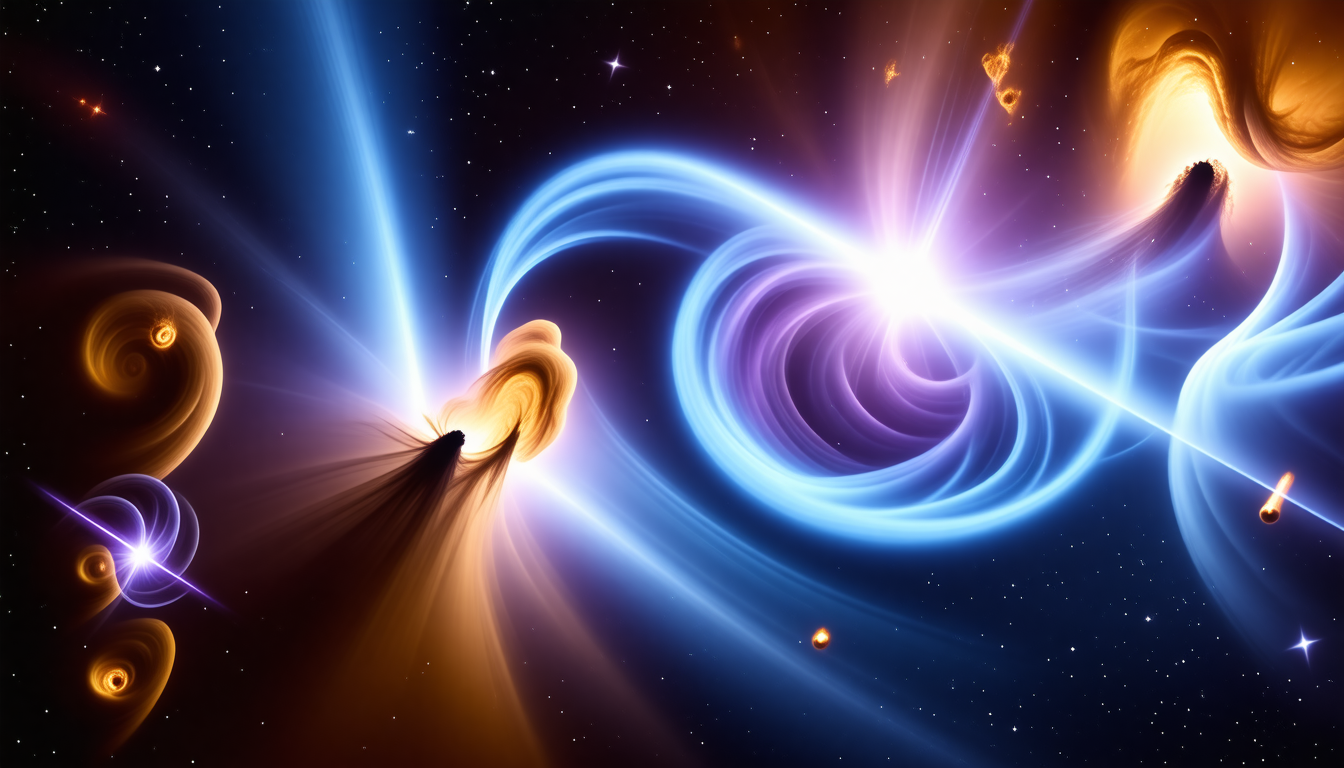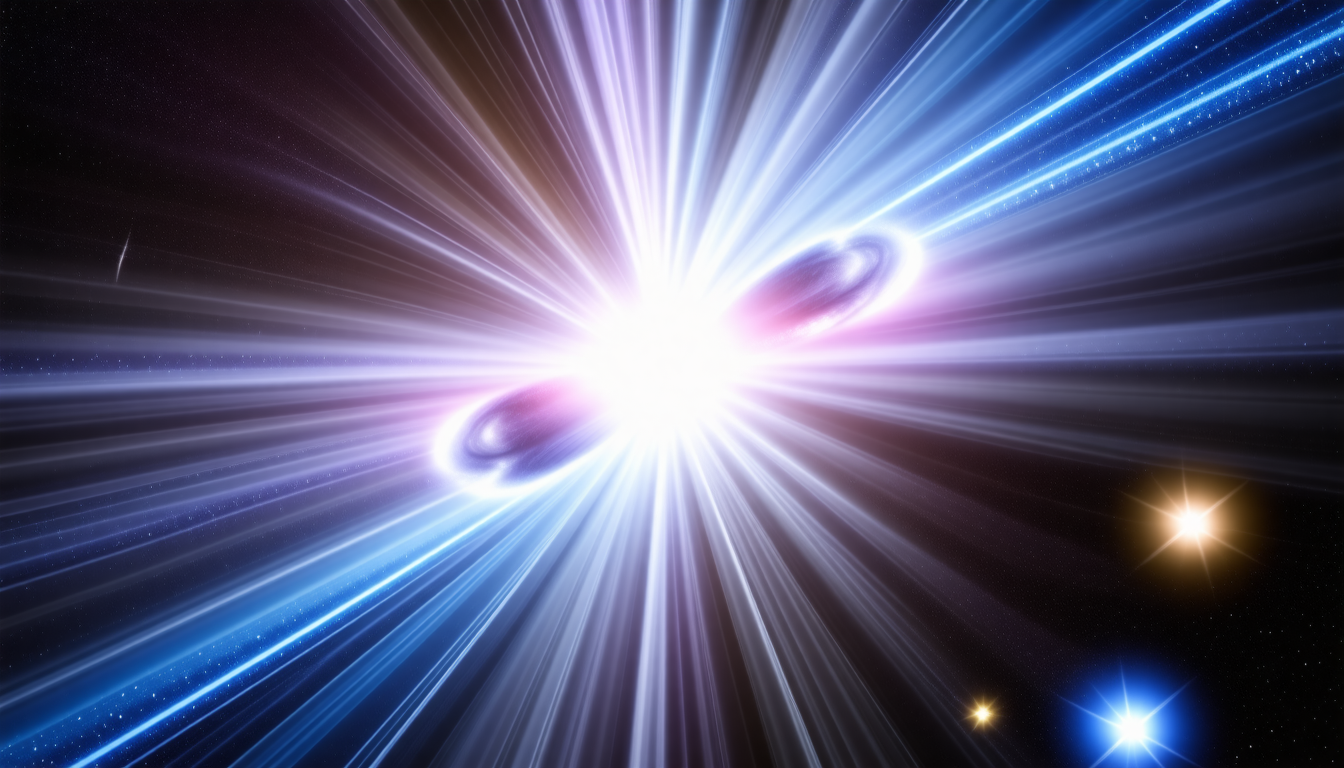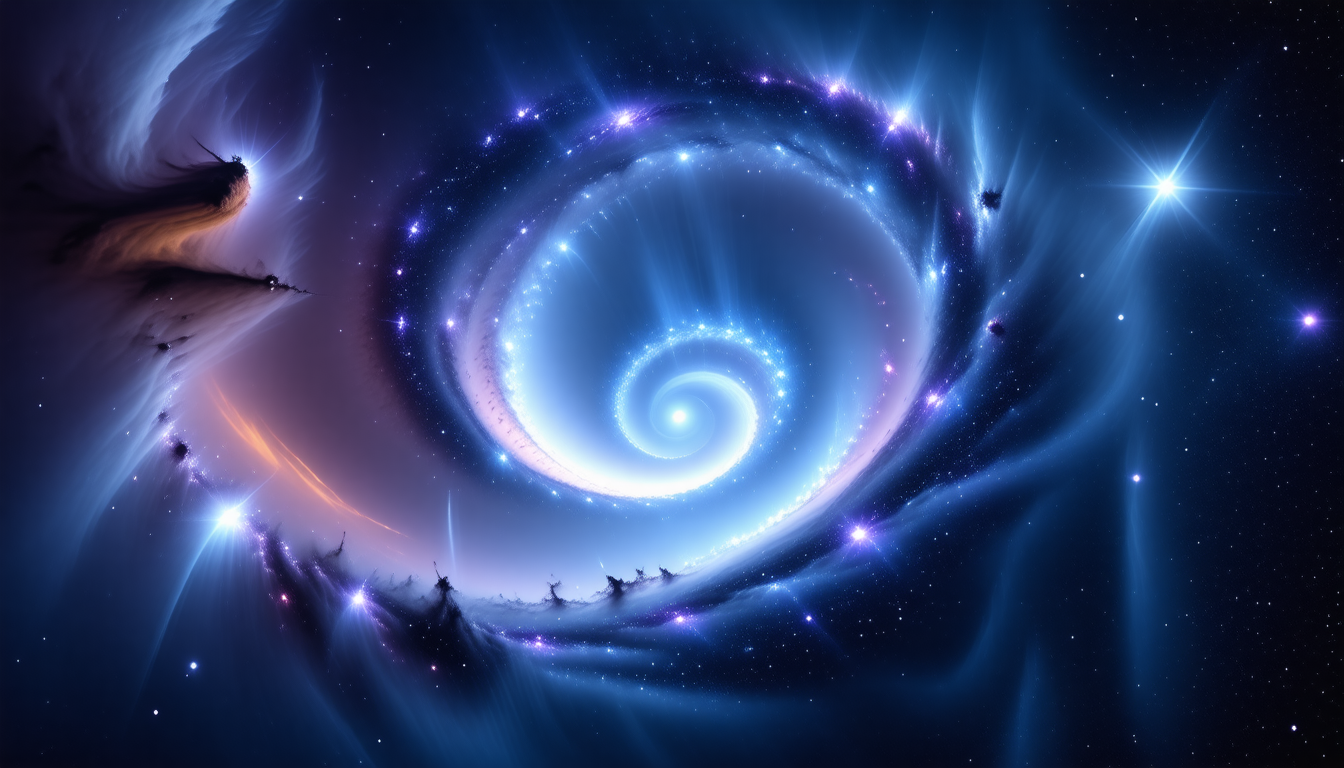Cosmic Enigmas: Unraveling the Mysteries of the Universe

Unveiling the Cosmic Mysteries
As we embark on an exploration of the cosmos, we are continually amazed by the astounding phenomena that challenge our understanding of the universe. Among these celestial enigmas, pulsars stand out as cosmic beacons, allowing us a glimpse into the extreme physics that governs the behavior of matter under extraordinary circumstances. Pulsars are rapidly rotating neutron stars that emit beams of electromagnetic radiation, analogous to how a lighthouse casts its light across the ocean. These beams sweep across the universe with remarkable precision, producing pulses of radiation that can be tracked with great accuracy. Some pulsars spin hundreds of times per second, creating rhythmic signals that resemble the ticking of a cosmic clock. The precision with which these pulsars emit signals has led to innovative uses in tests of fundamental physics and even in the search for gravitational waves.
Turning our gaze to the depths of space, we encounter black holes, the ultimate representation of the universe’s mysteries. Although often associated with darkness and isolation, black holes are fundamental players in shaping the cosmos. These regions of space possess gravity so intense that nothing, not even light, can escape their grasp. Formed from the remnants of massive stars that have undergone supernova explosions, black holes can influence the formation and evolution of their surrounding galaxies. When two black holes merge, they can produce ripples in the fabric of space-time known as gravitational waves, which were first detected in 2015, marking a monumental leap in astrophysical research. These waves not only prove the existence of black holes but also provide insights into their mass and spin, empowering scientists to decode the intricate dynamics of our universe.
As we venture deeper into the fabric of cosmic phenomena, quasars capture our imagination as some of the brightest and most distant objects known in the universe. These quasi-stellar objects are powered by supermassive black holes at the centers of galaxies, and as matter spirals into these black holes, it heats to staggering temperatures, emitting enormous amounts of energy across the electromagnetic spectrum. Observing quasar light allows astronomers to peer back in time, giving invaluable insights into the early stages of cosmic evolution during a time when galaxies were forming rapidly. The light from quasars has already illuminated our understanding of the distribution of matter throughout the universe and offers a window into the conditions that existed billions of years ago.
Among these intriguing celestial bodies are rogue planets—solitary wanderers in the vastness of space, detached from any star. The existence of these nomadic worlds challenges traditional views of planetary formation, manifesting a more dynamic narrative where planets can be ejected from their original star systems. Estimates suggest that our galaxy may contain billions of rogue planets, each a potential harbinger of secrets regarding planetary development and the conditions that might foster life far from their stellar origins. These wanderers, drifting through the cosmos, hint at the vast diversity of celestial bodies that elude our current understanding, reigniting curiosity about the myriad possibilities lurking in the shadows of space.
In the grand tapestry of the cosmos, dark matter and dark energy stand as fundamental components whose elusive presence we can only infer by their gravitational influences on visible matter. Representing the majority of the universe’s mass, dark matter shapes the formation of galaxies by clustering in regions that attract normal matter, such as gas and dust, leading to the birth of stars. Meanwhile, dark energy, the force behind the universe’s accelerated expansion, presents unanswered questions that echo throughout astrophysics, challenging our understanding of the fabric of space-time itself.
As we journey through this celestial wonderland, we recognize that each discovery unveils a layer of complexity that enriches our understanding of the universe. From pulsars to black holes, quasars to rogue planets, and dark matter to dark energy, the cosmos dazzles with enigmas that not only pique our curiosity but also urge us to question the very essence of existence. With each new revelation, we find ourselves evermore captivated by the mysteries that await, propelling us forward in our quest to unveil the secrets of the universe.

The Role of Dark Matter and Dark Energy
The role of dark matter and dark energy in the universe is not merely a footnote in cosmic stories; it is a central theme that underpins the very framework of our understanding of the cosmos. Dark matter, an unseen and undetectable form of matter, is believed to constitute approximately 27% of the universe’s total mass-energy content. Though it does not emit, absorb, or reflect light, its presence is inferred from its gravitational effects on visible matter, particularly in the dynamics of galaxies. Observations of galaxy rotation curves reveal a startling discrepancy: stars at the outskirts of galaxies orbit at far higher speeds than can be accounted for by the mass of visible stars alone. The gravitational pull wielded by an invisible halo of dark matter is what holds these galaxies together, ensuring they do not spiral apart.
One of the most compelling pieces of evidence for dark matter’s existence comes from the observation of galaxy clusters. The gravitational lensing effect, where the light from distant galaxies bends around massive objects, allows scientists to map the distribution of both visible and dark matter. This phenomenon has unveiled vast cosmic webs where dark matter dominates, providing insight into the large-scale structure of the universe we observe today. Moreover, computer simulations based on dark matter theories successfully replicate the observed distribution of galaxies across the universe, reinforcing the notion that dark matter plays a critical role in cosmic evolution.
Dark energy, on the other hand, poses its own set of enigmas. Discovered through observations of distant supernovae, which revealed that the expansion of the universe is not just ongoing but accelerating, dark energy is thought to account for about 68% of the universe. The nature of dark energy remains one of the most profound mysteries in cosmology. Its most prevalent explanation is that it acts like a repulsive force, countering the attractive pull of gravity at cosmological scales. This concept reshapes our understanding of the fate of the universe—while some models suggest a “Big Freeze,” where galaxies drift apart and stars extinguish in an ever-cooling cosmos, others propose scenarios leading to a “Big Rip,” where the expansion continues to accelerate, ultimately tearing apart galaxies, stars, and even atoms. Such possibilities compel us to rethink our perceptions of cosmic time and existence, pushing humanity to consider its place on a colossal, yet ever-fragile, web of matter and energy.
In essence, dark matter and dark energy are more than abstract theoretical constructs; they’re tangible players in the story of the universe’s unfolding drama. Their investigation is akin to piecing together a grand cosmic puzzle, with each piece representing a different facet of reality that challenges our understanding of physics and the fundamental laws that govern the cosmos. As researchers strive to explore these hidden components—through powerful telescopes, sophisticated simulations, and collaborative international efforts—they illuminate paths toward answering some of the most profound questions of existence. What lies beyond our current comprehension, and what potential insights about our universe await discovery? As we continue our cosmic journey, the interplay of dark matter, dark energy, and their implications on the evolution and fate of the universe serves as a potent reminder of the mysteries that lie just beyond the horizon, beckoning us to further explore and understand the vast cosmos of which we are a part.

Anomalies and Phenomena in Astrophysics
The realm of astrophysics is filled with anomalies and phenomena that ignite the imagination and challenge our understanding of the universe. Fast radio bursts (FRBs) stand out as one of the most perplexing cosmic events we have uncovered. These brief, intense flashes of radio waves originate from distant galaxies, firing off signals that last just milliseconds but release more energy in those fleeting moments than our Sun does in an entire day. The origins of these bursts remain largely shrouded in mystery. Some researchers speculate they may be linked to flaring magnetars—neutron stars with exceptionally strong magnetic fields—while others propose exotic scenarios involving cosmic processes that are still beyond our grasp. The sporadic nature of FRBs adds to the challenge, as many are singular events that leave no trace behind, prompting questions about their mechanics and the potential sources of such formidable energy.
Moving deeper into the cosmos’ enigma, we encounter the phenomenon of gravitational lensing. This compelling effect occurs when massive celestial objects, like galaxies, bend and magnify the light from objects behind them, creating distorted images, multiple images, or even arcs of light in our telescopic observations. Gravitational lensing provides a unique tool for astronomers, allowing them to study both the properties of the lensing objects and the more distant sources. Notably, this technique has become pivotal in mapping the distribution of dark matter in the universe, as the gravitational pull exerted by dark matter influences this bending of light, thus providing insights about its existence in locations where it remains invisible. As a result, gravitational lensing not only opens windows into the distant past but also enhances our understanding of the universe’s large-scale structure, offering clues about how galaxies interact and evolve over cosmic time scales.
Quasars also embody some of the most extraordinary phenomena in astrophysics. These luminous objects, powered by supermassive black holes at the centers of distant galaxies, are known to outshine entire galaxies when actively consuming material. As matter spirals into a black hole, it heats up to extreme temperatures, emitting vast amounts of energy across the electromagnetic spectrum. Quasars not only captivate with their brilliance but serve as vital indicators of the universe’s history, acting as beacons that penetrate cosmic distances. Their study allows scientists to glimpse the conditions of the early universe, providing invaluable information about galaxy formation and evolution. Some quasars date back to less than a billion years after the Big Bang, indicating how quickly black holes may have gained mass in the nascent cosmos.
Adding to this cosmic bouquet are the rogue planets—celestial wanderers unbound to any star, drifting alone in the vastness of space. These enigmatic worlds challenge traditional concepts of planetary formation. Instead of formulating neatly within stable orbits around stars, rogue planets may have been ejected from their original systems due to gravitational interactions, presenting a more dynamic picture of the planetary lifecycle. Estimates suggest billions of these loners may exist in our galaxy, each one offering a unique opportunity to study planetary formation and the potential for life in environments detached from stellar warmth. The discovery of rogue planets pushes the boundaries of habitability further away, leading scientists to reconsider the conditions under which life might arise.
Among the collection of cosmic oddities, dark matter provides a compelling backdrop for understanding anomalies in the universe. Although it doesn’t emit light and cannot be detected directly, its gravitational influence is profound, shaping the structure of galaxies and clustering them in ways that alter our perception of cosmic phenomena. Dark matter’s existence is inferred from observations such as the rotation curves of galaxies, where outer stars orbit at unexpectedly high speeds, indicating an unseen mass exerting gravitational forces. The study of these unseen components continues to illuminate the nature of cosmic structure formation and the evolution of galaxies. As more tools are developed to probe these existential questions, each discovery reveals more about the importance of dark matter in the tapestry of our universe.
As we immerse ourselves in the marvels of astrophysics, anomalies like fast radio bursts, gravitational lensing, quasars, and rogue planets serve as reminders of the complexities and wonders that abound in the universe. Each phenomenon draws us closer to unraveling the fabric of reality, challenging our understanding and inviting us to ponder the mysteries that lie beyond our current grasp. The quest to comprehend them not only expands our knowledge of the cosmos but also deepens our connection to the intricate story of existence itself.